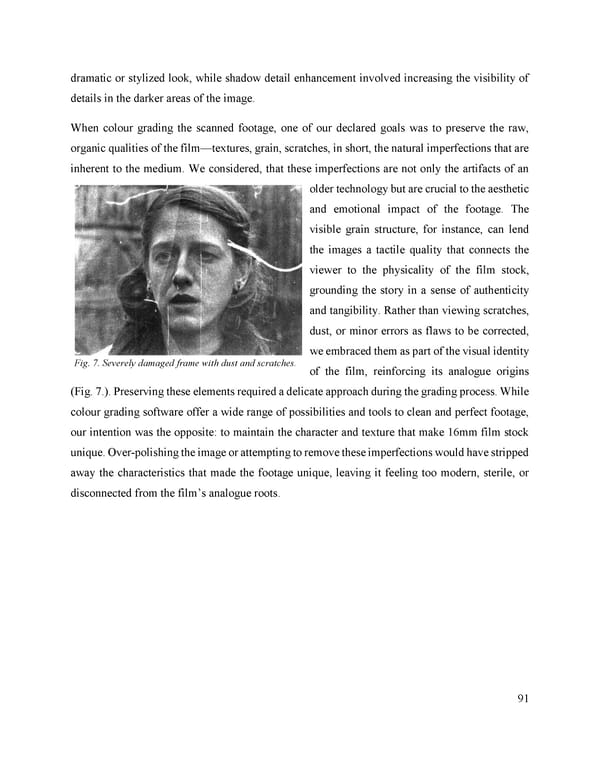dramatic or stylized look, while shadow detail enhancement involved increasing the visibility of details in the darker areas of the image. When colour grading the scanned footage, one of our declared goals was to preserve the raw, organic qualities of the film—textures, grain, scratches, in short, the natural imperfections that are inherent to the medium. We considered, that these imperfections are not only the artifacts of an older technology but are crucial to the aesthetic and emotional impact of the footage. The visible grain structure, for instance, can lend the images a tactile quality that connects the viewer to the physicality of the film stock, grounding the story in a sense of authenticity and tangibility. Rather than viewing scratches, dust, or minor errors as flaws to be corrected, we embraced them as part of the visual identity Fig. 7. Severely damaged frame with dust and scratches. of the film, reinforcing its analogue origins (Fig. 7.). Preserving these elements required a delicate approach during the grading process. While colour grading software offer a wide range of possibilities and tools to clean and perfect footage, our intention was the opposite: to maintain the character and texture that make 16mm film stock unique. Over-polishing the image or attempting to remove these imperfections would have stripped away the characteristics that made the footage unique, leaving it feeling too modern, sterile, or disconnected from the film’s analogue roots. 91
 Lost Analogue: Exploring Film, Music, and Interdisciplinary Methods in Education Page 91 Page 93
Lost Analogue: Exploring Film, Music, and Interdisciplinary Methods in Education Page 91 Page 93